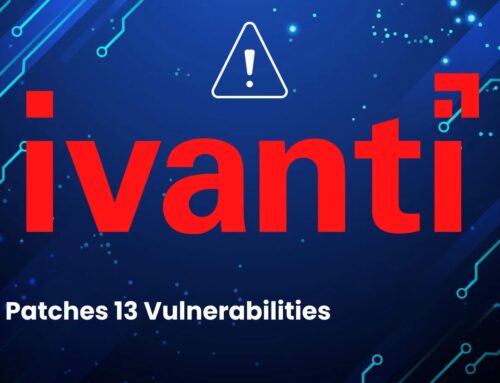
Famous Chollima APT Hackers Attacking Job Seekers and Organization to Deploy JavaScript Based Malware
The digital threat landscape constantly evolves, and few areas demand sharper vigilance than cybersecurity in professional networking. North Korean-linked advanced persistent threat (APT) groups are notorious for their sophisticated tactics, and the infamous **Chollima APT** has once again surfaced with a concerning campaign targeting an all too familiar vector: job seekers and organizations. Their latest methodology exploits the trust inherent in the hiring process, deploying insidious JavaScript-based malware to compromise systems.
Chollima APT’s Evolving Threat Profile
Known for their patience and intricate multi-stage attacks, the Chollima APT group (often associated with other North Korean threat actors) has been actively observed since December 2022. This campaign marks a strategic shift, pivoting from more traditional spear-phishing attempts to leveraging a highly effective social engineering vector: legitimate-looking recruitment. Their operations demonstrate a deep understanding of human psychology and organizational vulnerabilities.
Deceptive Recruitment: A Gateway to Compromise
The core of Chollima’s current strategy revolves around impersonating companies and recruiters to ensnare unsuspecting job seekers. This involves crafting compelling, fake job offers and engaging in what appears to be a standard hiring process. The objective is clear: to gain the trust of individuals and, through them, infiltrate target organizations. This approach is particularly effective because job seekers are often highly motivated to engage with potential employers, making them less likely to scrutinize seemingly legitimate communications.
Multi-Stage Attack Methodology Explained
The Chollima APT’s attack chain is far from simple, characterized by several carefully orchestrated stages designed to bypass security controls and achieve persistent access:
- Initial Lure: Phishing emails or messages, often via professional networking platforms, mimic legitimate job offers from well-known companies or recruiters. These typically include links to fake job descriptions or application portals.
- Malicious Document Delivery: Victims are prompted to download or open what appears to be a resume template, a job description, or an application form. These documents (often disguised as Word or PDF files) contain embedded malicious scripts or macros.
- JavaScript-Based Malware Deployment: Upon execution, these scripts deploy JavaScript-based malware. JavaScript, being a widely used web technology, can often blend in with legitimate traffic and evade basic detections. This malware establishes initial persistence and communication with command-and-control (C2) servers.
- Staging and Payload Delivery: The initial JavaScript malware acts as a loader, downloading additional malicious components. This modular approach allows the attackers to tailor the final payload based on the compromised system’s configuration and the threat actor’s objectives.
- Lateral Movement and Data Exfiltration: Once established within the network, the attackers aim for lateral movement to identify valuable assets, escalate privileges, and ultimately exfiltrate sensitive data or deploy further destructive payloads.
Impact on Job Seekers and Organizations
For job seekers, falling victim can lead to identity theft, financial fraud, and the compromise of personal and sensitive data. Their devices can be turned into botnets or used as launching pads for further attacks. For organizations, the implications are far more severe: data breaches, intellectual property theft, ransomware deployment, operational disruption, and significant reputational damage. The cost of remediation can run into millions, not to mention the long-term impact on customer trust.
Remediation Actions and Best Practices
Mitigating the Chollima APT’s deceptive recruitment tactics requires a multi-layered defense strategy for both individuals and organizations.
For Job Seekers:
- Verify Authenticity: Always cross-reference job offers and recruiter messages with official company websites. Look for inconsistencies in email addresses, domain names, and contact information.
- Avoid Unsolicited Links/Attachments: Be extremely wary of opening attachments or clicking links from unknown or suspicious sources, especially if they claim to be job-related. Directly navigate to company career pages.
- Strong Passwords and MFA: Use strong, unique passwords for all online accounts, especially professional networking sites. Enable multi-factor authentication (MFA) wherever possible.
- Keep Software Updated: Ensure your operating system, web browser, and antivirus software are always up to date.
- Use Reputable Job Boards: Stick to well-known and reputable job search platforms.
For Organizations:
- Employee Training and Awareness: Conduct regular cybersecurity awareness training, specifically highlighting social engineering tactics like fake recruitment campaigns. Employees, especially HR and recruitment teams, must be the first line of defense.
- Robust Email Security: Implement advanced email filtering solutions that can detect and block phishing attempts, malicious attachments, and imposter emails.
- Endpoint Detection and Response (EDR): Deploy EDR solutions to monitor endpoints for suspicious activity, even if initial malware execution attempts are successful. This helps in early detection and containment.
- Network Segmentation: Segment your network to limit lateral movement in case of a breach, preventing an initial compromise from spreading across critical systems.
- Principle of Least Privilege: Enforce the principle of least privilege for all users and applications to minimize the impact of a compromised account.
- Regular Backups: Maintain regular, offsite backups of critical data to ensure business continuity in the event of a ransomware attack or data corruption.
- Threat Intelligence: Subscribe to and act upon timely threat intelligence regarding active APT campaigns and their indicators of compromise (IOCs).
- Application Whitelisting: Consider implementing application whitelisting to prevent unauthorized executables, including malicious JavaScript, from running on endpoints.
Threat Detection Tools
Implementing the right tools is crucial for detecting and mitigating threats posed by sophisticated APT groups like Chollima.
| Tool Name | Purpose | Link |
|---|---|---|
| Endpoint Detection and Response (EDR) Solutions | Real-time monitoring, detection, and response to threats on endpoints. | (Vendor Specific – e.g., CrowdStrike, SentinelOne, Microsoft Defender for Endpoint) |
| Security Information and Event Management (SIEM) Systems | Aggregates and analyzes security logs from various sources for threat detection. | (Vendor Specific – e.g., Splunk, IBM QRadar, Elastic SIEM) |
| Email Security Gateways | Filters emails for spam, phishing, malware, and other threats. | (Vendor Specific – e.g., Proofpoint, Mimecast, Microsoft 365 Defender) |
| Network Intrusion Detection/Prevention Systems (NIDS/NIPS) | Monitors network traffic for malicious activity and can block attacks. | (Vendor Specific – e.g., Snort, Suricata, Fortinet FortiGate) |
| Vulnerability Scanners | Identifies weaknesses and misconfigurations in systems and applications. | (Vendor Specific – e.g., Nessus, Qualys, OpenVAS) |
Key Takeaways
The Chollima APT’s targeting of job seekers and organizations via deceptive recruitment processes underscores a critical reality: threat actors will exploit any avenue of trust to achieve their objectives. Individuals must exercise extreme caution when engaging with unsolicited job offers, and organizations must invest in robust security measures and, more importantly, continuous employee education. Proactive defense, vigilance, and a skeptical eye toward unexpected communications are our strongest shields against such sophisticated and persistent threats.





